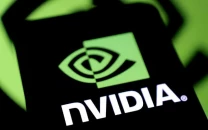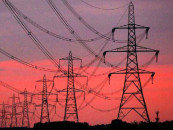Japan Fukushima operator starts diverting groundwater to sea
Move is an attempt to stop unpolluted groundwater mixing with radioactive water already there under the plant.

This picture taken on April 9, 2014 shows a facility to pump up underground water at the Tokyo Electric Power CO (TEPCO) Fukushima Dai-ichi nuclear power plant at Okuma town in Fukushima prefecture. PHOTO: AFP
The move is an attempt to stop tonnes of unpolluted groundwater flowing under the battered plant and mixing with water already there that is laced with radioactive isotopes.
Coping with the huge - and growing - amount of water at the tsunami-damaged plant is proving to be one of the biggest challenges for Tokyo Electric Power Co. (TEPCO), as it looks to clean up the mess after the worst nuclear disaster in a generation.
As well as all the water used to keep broken reactors cool, the utility must also deal with the water that makes its way along subterranean watercourses from mountainsides to the sea.
An extra 300-400 tonnes of groundwater becomes contaminated beneath the site each day.
For the past month TEPCO has been pumping groundwater onto the hillside before it enters the plant site, and storing it in tanks.
On Wednesday, engineers started releasing that water after it satisfied quality tests more rigorous than those put in place by the Japanese government or by the United Nations, TEPCO said in a statement.
The scheme has met opposition from fishermen in the area who are already battling the perception that their catch is not safe to eat because of pollutants from the plant.
The bypass got the green light after TEPCO pledged it would exceed normal safety standards.
"With the bypass system, we are able to reduce by up to 80 tonnes per day" the volume of water that becomes contaminated under the plant, a TEPCO spokesman said.
In a test of water samples taken on April 15, potentially dangerous isotopes, including caesium and tritium, were found to be a fraction of the maximum allowed under World Health Organization guidelines for drinking water, TEPCO said.
Environmental activists Greenpeace warned Wednesday that this groundwater release must not be allowed to lower the standards for any future discharge.
The decision by local fishermen to give their consent for the release "must have been an agonising" one "based on a 'no other choice' scenario rather than as part of long-term solutions for the people of Fukushima," Kazue Suzuki, Greenpeace Japan Nuclear campaigner, said in a statement.
TEPCO should improve the way it discloses radiation readings in groundwater, and it should be monitored "in an ongoing way, more than just at the point of discharge," she added.
TEPCO was planning to release about 560 tonnes of groundwater on Wednesday, it later said, with its chief decommissioning officer Naohiro Masuda pledging "to concentrate on a safe and sound operation."
Thousands of gallons of contaminated water are still being stored at the sites, with no permanent solution so far agreed.
Many experts say that at some point the water will have to be released into the sea after being scoured of the most harmful contaminants.
They say it will pose a negligible risk to marine life or people, but local fishermen and neighbouring countries are fiercely opposed.
TEPCO said Tuesday it had suspended a trouble-plagued system used to clean radiation-tainted water, but on Wednesday the spokesman said part of its Advanced Liquid Processing System will likely resume operations on Thursday.



















COMMENTS
Comments are moderated and generally will be posted if they are on-topic and not abusive.
For more information, please see our Comments FAQ